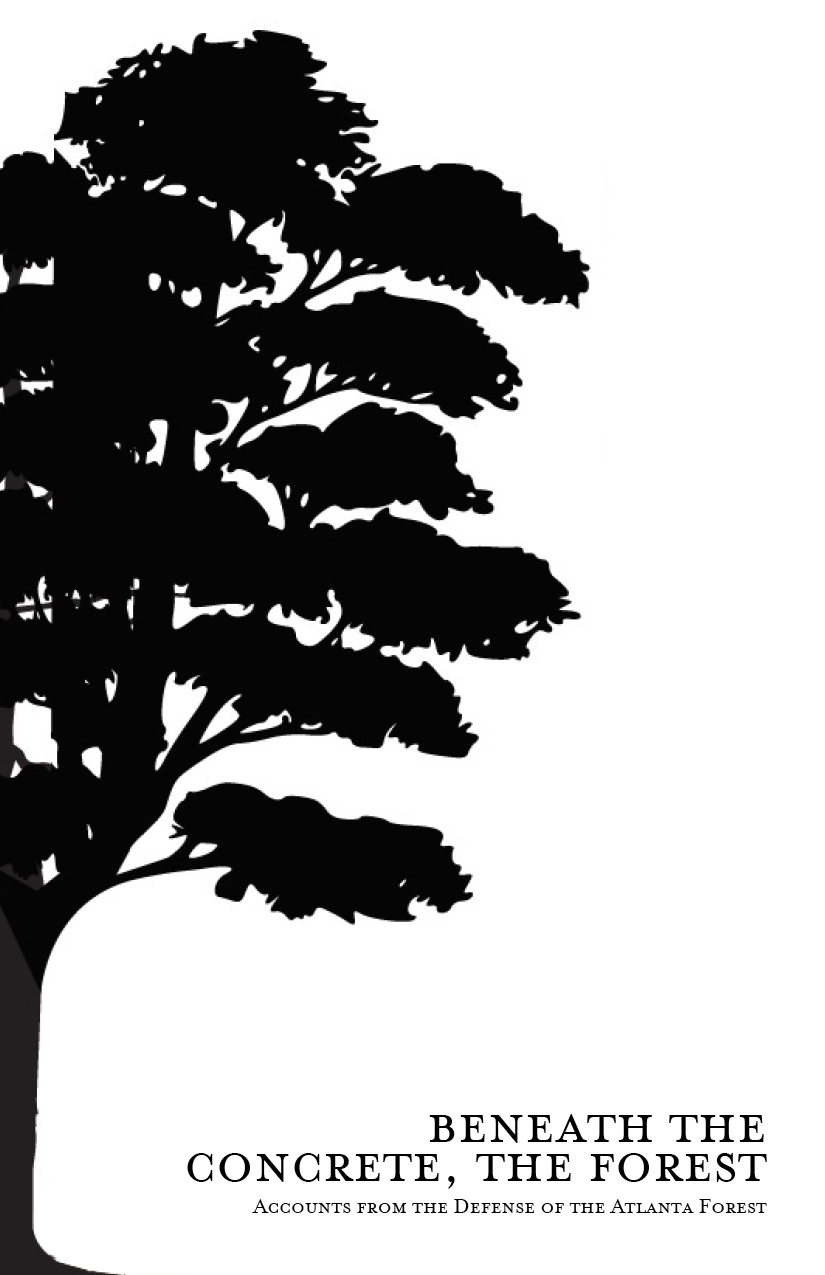In Atlanta, Georgia, the city government intends to destroy large swaths of what remains of the South River Forest—also known by the Muskogee name for the river, Weelaunee. In place of one stretch of woods, they aim to build a police training compound; they have sold the neighboring part to Blackhall Studios executive Ryan Millsap, who intends to build a giant soundstage. Yet for more than a year now, activists have protected the forest against their plans. In a previous article, we chronicled how this campaign got started and the strategies that have driven it; in the following collection of narratives, participants in the movement describe their experiences and explain what makes this fight meaningful to them.
The fight to defend the forest brings together locals whose neighborhood will be gentrified by the developments, environmentalists who recognize the importance of the forest in mitigating the impact of climate change, forest defenders who have been occupying the trees for months, abolitionists who oppose the expansion of racist policing in Atlanta, and young people who desperately need a free space to build community outside the high prices and profit imperatives of Atlanta corporate nightlife. These are not discrete issues, but aspects of a coherent whole.
The destruction of the tree canopy and the gentrification of neighborhoods are stages in the same process: the former paves the way for the latter. Forcibly displacing Indigenous peoples, carving up the natural world into private property, burying the fertile earth under concrete, and terrorizing the inhabitants with police violence are all expressions of the same logic. Catastrophic climate change is the large-scale consequence of a series of smaller steps that are no less catastrophic in the lives of individual human beings.
The defense of the forest in Atlanta is only one of many such struggles over land and housing across the continent, including People’s Park in Berkeley, Echo Park in Los Angeles, and the camp defending the UC Townhomes in Philadelphia. As investment capital floods the real estate market, it has become increasingly difficult for to afford housing, let alone maintain collective space in which to experiment and build a common context. These movements have responded by defending a shared space of life and struggle.
Most of the accounts collected in this zine describe the events of the week of action at the end of July 2022, when people from around Atlanta and other parts of the United States gathered for a week of discussions, protests, and concerts. The week of action culminated with a festival during which DJs, bands, and speakers performed, showing how the forest serves as an autonomous zone beyond the constraints of the capitalist economy.
The forest is not just a particular concentration of trees; we can also understand it as a network of relationships between living creatures of all species. Life flourishes when it is liberated from control. This was palpable in the festival at the conclusion of the week of action. In a club, a breakdown or a breakbeat functions as a kind of lubricant to grease the gears of exploitation, bringing in business and (at best) advancing the career of a particular DJ or band. In a liberated zone, the collective experience of music can signify shared power, the joyous realization of potential, showing how each person’s creativity can contribute to the liberation of all.
The South River Forest is not an old-growth forest. If anything, this makes the movement to defend it more inspiring. This land was already brutalized—yet, given a few years of peace, it became a wilderland capable of sustaining spaces of freedom. Any patch of flowers growing out of the cracks in the concrete could become a forest if we defend it. The possibility of freedom awaits all around and within us, even in the most repressive environments.
The forest—which is to say, the web of life—extends beyond the bounds of any designated park, into each of our bodies. This web is what sustains our lives, not the extraction industries that are currently destroying the basis of existence for countless species.
Two decades ago, the authors of Fighting for Our Lives suggested that “The best reason to be a revolutionary is that it is simply a better way to live.” As state violence accelerates the catastrophes resulting from capitalist industrialism, it may turn out that it is also the only way to live.

You can read the contents of this zine online here.
